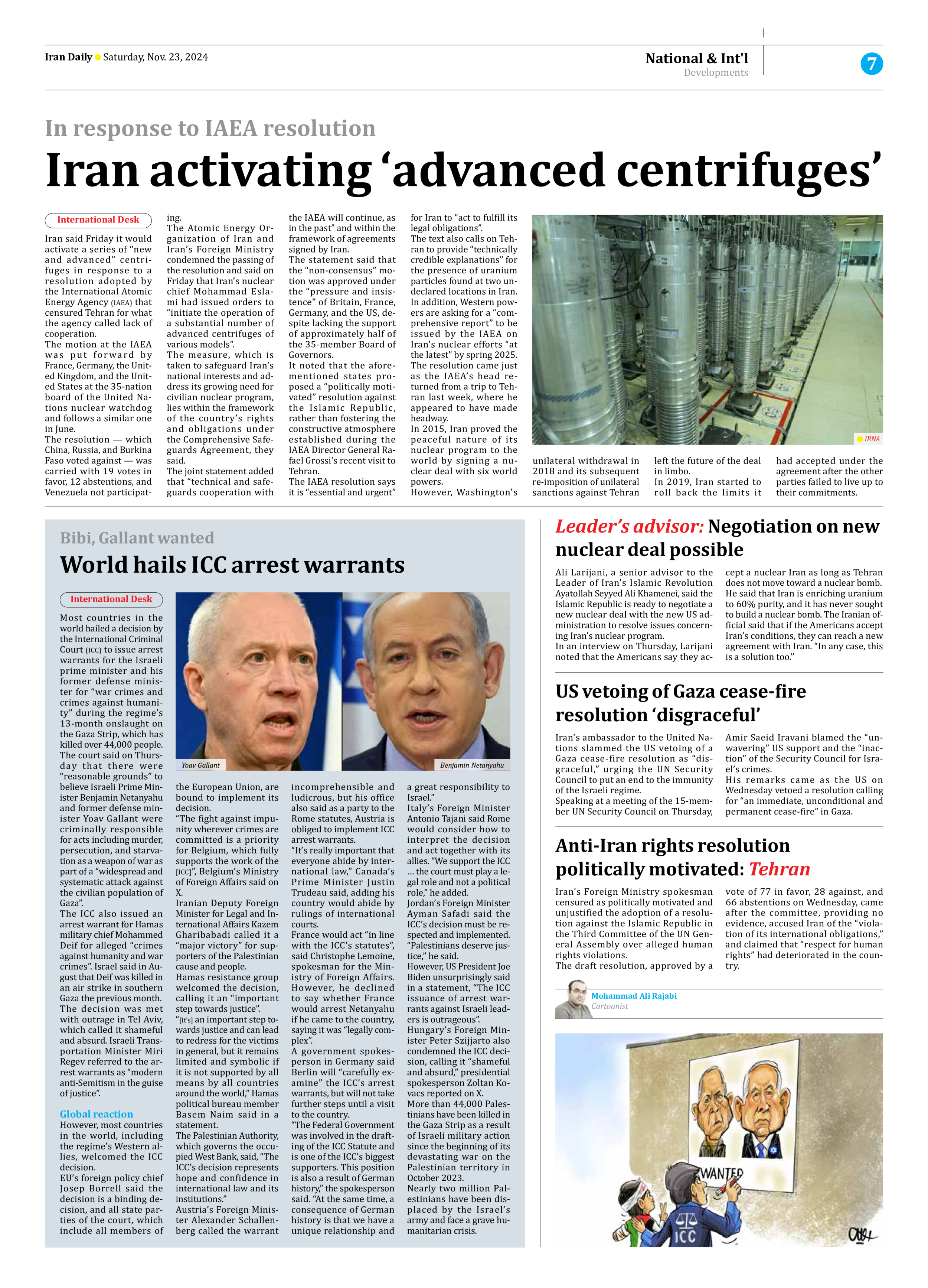
In response to IAEA resolution
Iran activating ‘advanced centrifuges’
Iran said Friday it would activate a series of “new and advanced” centrifuges in response to a resolution adopted by the International Atomic Energy Agency (IAEA) that censured Tehran for what the agency called lack of cooperation.
The motion at the IAEA was put forward by France, Germany, the United Kingdom, and the United States at the 35-nation board of the United Nations nuclear watchdog and follows a similar one in June.
The resolution — which China, Russia, and Burkina Faso voted against — was carried with 19 votes in favor, 12 abstentions, and Venezuela not participating.
The Atomic Energy Organization of Iran and Iran’s Foreign Ministry condemned the passing of the resolution and said on Friday that Iran’s nuclear chief Mohammad Eslami had issued orders to “initiate the operation of a substantial number of advanced centrifuges of various models”.
The measure, which is taken to safeguard Iran’s national interests and address its growing need for civilian nuclear program, lies within the framework of the country’s rights and obligations under the Comprehensive Safeguards Agreement, they said.
The joint statement added that “technical and safeguards cooperation with the IAEA will continue, as in the past” and within the framework of agreements signed by Iran.
The statement said that the “non-consensus” motion was approved under the “pressure and insistence” of Britain, France, Germany, and the US, despite lacking the support of approximately half of the 35-member Board of Governors.
It noted that the aforementioned states proposed a “politically motivated” resolution against the Islamic Republic, rather than fostering the constructive atmosphere established during the IAEA Director General Rafael Grossi’s recent visit to Tehran.
The IAEA resolution says it is “essential and urgent” for Iran to “act to fulfill its legal obligations”.
The text also calls on Tehran to provide “technically credible explanations” for the presence of uranium particles found at two undeclared locations in Iran.
In addition, Western powers are asking for a “comprehensive report” to be issued by the IAEA on Iran’s nuclear efforts “at the latest” by spring 2025.
The resolution came just as the IAEA’s head returned from a trip to Tehran last week, where he appeared to have made headway.
In 2015, Iran proved the peaceful nature of its nuclear program to the world by signing a nuclear deal with six world powers.
However, Washington’s unilateral withdrawal in 2018 and its subsequent re-imposition of unilateral sanctions against Tehran left the future of the deal in limbo.
In 2019, Iran started to roll back the limits it had accepted under the agreement after the other parties failed to live up to their commitments.







